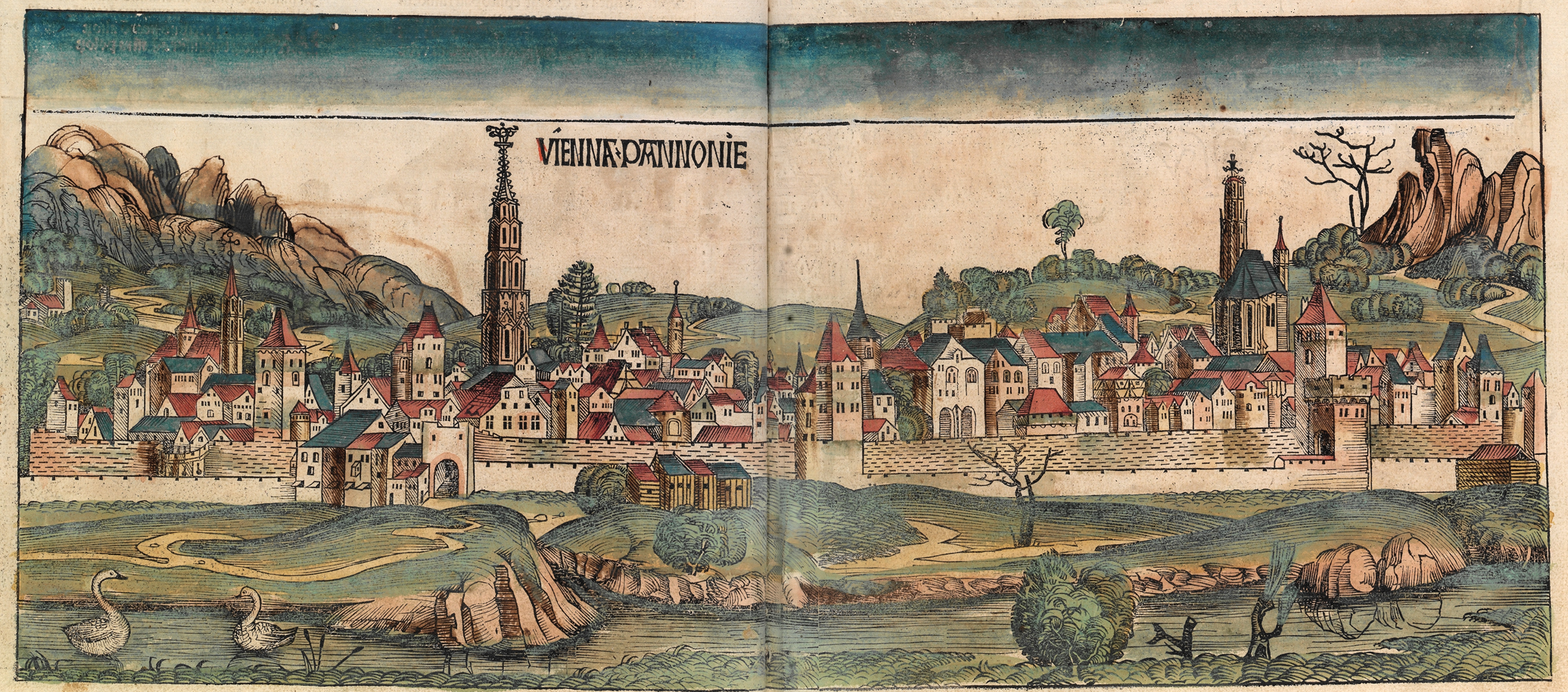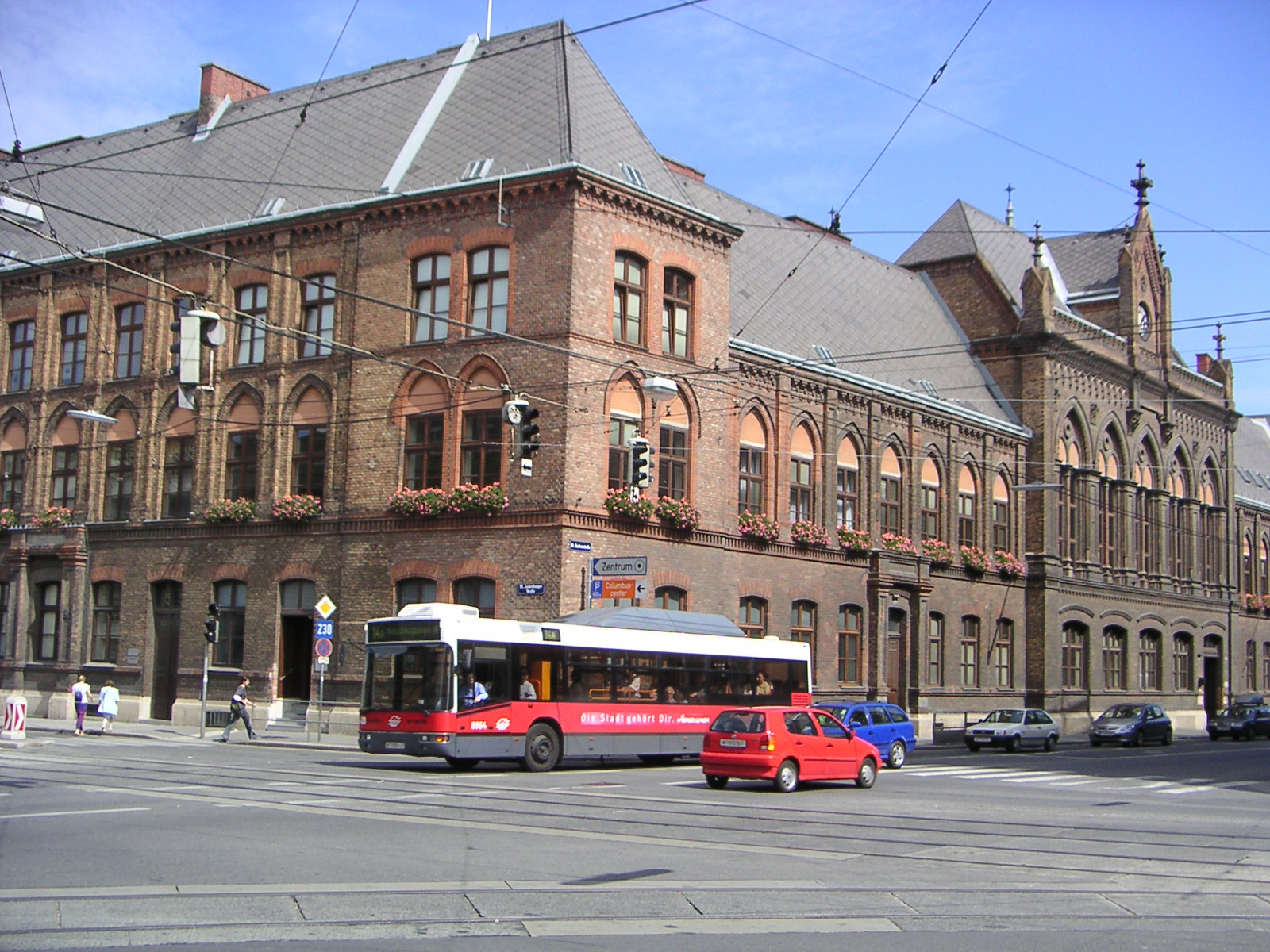|
Vienna Twin Tower
The Vienna Twin Tower is a building complex located in the ''Wienerberg City'' in Favoriten, the tenth district of Vienna. The complex is located near the Wienerberg, on the Wienerbergstraße and near Triester Straße. The complex is built in the High-tech style. The twin building is the tallest building in the newly built quarter, which is currently mostly a series of apartment and office buildings. Construction began in 1999 and finished in 2001. The highrise has 37 floors above ground and office space of over 100,000 square metres. The tower is composed of two building halves connected at an obtuse corner. One is 138 metres high, the other 127, and they also connect through several bridges. The architect was Massimiliano Fuksas Massimiliano Fuksas (born January 9, 1944) is an Italian architect. He is the head of ''Studio Fuksas'' in partnership with his wife, Doriana Mandrelli Fuksas, with offices in Rome, Paris and Shenzhen. Biography Fuksas was born in Rome in 194 ... [...More Info...] [...Related Items...] OR: [Wikipedia] [Google] [Baidu] |
Vienna
en, Viennese , iso_code = AT-9 , registration_plate = W , postal_code_type = Postal code , postal_code = , timezone = CET , utc_offset = +1 , timezone_DST = CEST , utc_offset_DST = +2 , blank_name = Vehicle registration , blank_info = W , blank1_name = GDP , blank1_info = € 96.5 billion (2020) , blank2_name = GDP per capita , blank2_info = € 50,400 (2020) , blank_name_sec1 = HDI (2019) , blank_info_sec1 = 0.947 · 1st of 9 , blank3_name = Seats in the Federal Council , blank3_info = , blank_name_sec2 = GeoTLD , blank_info_sec2 = .wien , website = , footnotes = , image_blank_emblem = Wien logo.svg , blank_emblem_size = Vienna ( ; german: Wien ; ba ... [...More Info...] [...Related Items...] OR: [Wikipedia] [Google] [Baidu] |
Austria
Austria, , bar, Östareich officially the Republic of Austria, is a country in the southern part of Central Europe, lying in the Eastern Alps. It is a federation of nine states, one of which is the capital, Vienna, the most populous city and state. A landlocked country, Austria is bordered by Germany to the northwest, the Czech Republic to the north, Slovakia to the northeast, Hungary to the east, Slovenia and Italy to the south, and Switzerland and Liechtenstein to the west. The country occupies an area of and has a population of 9 million. Austria emerged from the remnants of the Eastern and Hungarian March at the end of the first millennium. Originally a margraviate of Bavaria, it developed into a duchy of the Holy Roman Empire in 1156 and was later made an archduchy in 1453. In the 16th century, Vienna began serving as the empire's administrative capital and Austria thus became the heartland of the Habsburg monarchy. After the dissolution of the H ... [...More Info...] [...Related Items...] OR: [Wikipedia] [Google] [Baidu] |
Massimiliano Fuksas
Massimiliano Fuksas (born January 9, 1944) is an Italian architect. He is the head of ''Studio Fuksas'' in partnership with his wife, Doriana Mandrelli Fuksas, with offices in Rome, Paris and Shenzhen. Biography Fuksas was born in Rome in 1944; his father was Lithuanian Jewish while his Catholic mother was the daughter of a French father and an Austrian mother. At the beginning of the 1960s, he worked for Giorgio de Chirico in Rome. After he left Italy, he worked for a period for Archigram in London, for Henning Larsen and for Jørn Utzon in Copenhagen. He received his degree in architecture from the La Sapienza University in 1969 in Rome, where he opened his first office in 1967, the GRANMA, collaborating with his first-wife Anna Maria Sacconi. From 1985 he has worked in partnership with his second wife, Doriana Mandrelli, who graduated in Architecture in Paris in 2007. Subsequent offices were opened in Paris (1989) and Vienna (1993), Frankfurt (2002) and Shenzhen, China (2 ... [...More Info...] [...Related Items...] OR: [Wikipedia] [Google] [Baidu] |
Wien Vienna Twin Tower Lookdown
en, Viennese , iso_code = AT-9 , registration_plate = W , postal_code_type = Postal code , postal_code = , timezone = CET , utc_offset = +1 , timezone_DST = CEST , utc_offset_DST = +2 , blank_name = Vehicle registration , blank_info = W , blank1_name = GDP , blank1_info = € 96.5 billion (2020) , blank2_name = GDP per capita , blank2_info = € 50,400 (2020) , blank_name_sec1 = HDI (2019) , blank_info_sec1 = 0.947 · 1st of 9 , blank3_name = Seats in the Federal Council , blank3_info = , blank_name_sec2 = GeoTLD , blank_info_sec2 = .wien , website = , footnotes = , image_blank_emblem = Wien logo.svg , blank_emblem_size = Vienna ( ; german: Wien ; bar, ... [...More Info...] [...Related Items...] OR: [Wikipedia] [Google] [Baidu] |
Favoriten
Favoriten (; Central Bavarian: ''Favoritn''), the 10th district of Vienna, Austria (german: 10. Bezirk, Favoriten), is located south of the central districts. It is south of Innere Stadt, Wieden and Margareten. Favoriten is a heavily populated urban area with many residential buildings, but also large recreational areas and parks. Wien-Vienna.at webpage (see below: References). Wien.gv.at webpage (see below: References). The name comes from ''Favorita'', a semi- baroque palace complex that once served as a hunting castle but today is the Theresianum a Gymnasium (middle and high school) in the 4th district (Wieden). The customs facilities at the original southern border of Vienna were known as the ''Favoriten-Linie'' (Favoriten Line) while nearby houses were known as the ''Siedlung vor der Favoriten-Linie'' (Settlement in front of the Favoriten Line). District sections The Favoriten District includes 6 sections: Katastralgemeinden Favoriten, Inzersdorf-Stadt, Rothneusi ... [...More Info...] [...Related Items...] OR: [Wikipedia] [Google] [Baidu] |
Wienerberg
Favoriten (; Central Bavarian: ''Favoritn''), the 10th Districts of Vienna, district of Vienna, Austria (german: 10. Bezirk, Favoriten), is located south of the central districts. It is south of Innere Stadt, Wieden and Margareten. Favoriten is a heavily populated urban area with many residential buildings, but also large recreational areas and parks. Wien-Vienna.at webpage (see below: References). Wien.gv.at webpage (see below: References). The name comes from ''Favorita'', a semi-baroque palace complex that once served as a hunting castle but today is the Theresianum a Gymnasium (school), Gymnasium (middle and high school) in the 4th district (Wieden). The customs facilities at the original southern border of Vienna were known as the ''Favoriten-Linie'' (Favoriten Line) while nearby houses were known as the ''Siedlung vor der Favoriten-Linie'' (Settlement in front of the Favoriten Line). District sections The Favoriten District includes 6 sections: Katastralgemeinden ... [...More Info...] [...Related Items...] OR: [Wikipedia] [Google] [Baidu] |
High-tech Architecture
High-tech architecture, also known as structural expressionism, is a type of late modernist architecture that emerged in the 1970s, incorporating elements of high tech industry and technology into building design. High-tech architecture grew from the modernist style, utilizing new advances in technology and building materials. It emphasizes transparency in design and construction, seeking to communicate the underlying structure and function of a building throughout its interior and exterior. High-tech architecture makes extensive use of aluminium, steel, glass, and to a lesser extent concrete (the technology for which had developed earlier), as these materials were becoming more advanced and available in a wider variety of forms at the time the style was developing - generally, advancements in a trend towards lightness of weight. High-tech architecture focuses on creating adaptable buildings through choice of materials, internal structural elements, and programmatic design. It se ... [...More Info...] [...Related Items...] OR: [Wikipedia] [Google] [Baidu] |
Vienna U-Bahn
The Vienna U-Bahn (german: U-Bahn Wien), where ''U-Bahn'' is an abbreviation of the German term ''Untergrundbahn'' ( en, underground railway), is a rapid transit system serving Vienna, Austria. With the September 2017 opening of the , five-station extension of the U1 line, the five-line U-Bahn network consists of of route, serving 109 stations. It is the backbone of one of the best performing public transport systems worldwide according to UITP (International Association of Public Transport) in June 2009.Hödl, J: ''Das Wiener U-Bahn-Netz'', Wiener Linien, 2009. More than 1.3 million passengers rode the Vienna U-Bahn every day in 2009, and 567.6 million passengers used the U-Bahn in 2011, which declined to 428.8 million passengers in 2013. The network is undergoing expansion and rolling stock renewal. Since 1969, 200 million euros have been invested annually in the extension of the Vienna U-Bahn. The modern U-Bahn opened on 25 February 1978 (after test operations began on 8 May ... [...More Info...] [...Related Items...] OR: [Wikipedia] [Google] [Baidu] |
Buildings And Structures Completed In 2001
A building, or edifice, is an enclosed structure with a roof and walls standing more or less permanently in one place, such as a house or factory (although there's also portable buildings). Buildings come in a variety of sizes, shapes, and functions, and have been adapted throughout history for a wide number of factors, from building materials available, to weather conditions, land prices, ground conditions, specific uses, prestige, and aesthetic reasons. To better understand the term ''building'' compare the list of nonbuilding structures. Buildings serve several societal needs – primarily as shelter from weather, security, living space, privacy, to store belongings, and to comfortably live and work. A building as a shelter represents a physical division of the human habitat (a place of comfort and safety) and the ''outside'' (a place that at times may be harsh and harmful). Ever since the first cave paintings, buildings have also become objects or canvasses of much artis ... [...More Info...] [...Related Items...] OR: [Wikipedia] [Google] [Baidu] |
Buildings And Structures In Favoriten
A building, or edifice, is an enclosed structure with a roof and walls standing more or less permanently in one place, such as a house or factory (although there's also portable buildings). Buildings come in a variety of sizes, shapes, and functions, and have been adapted throughout history for a wide number of factors, from building materials available, to weather conditions, land prices, ground conditions, specific uses, prestige, and aesthetic reasons. To better understand the term ''building'' compare the list of nonbuilding structures. Buildings serve several societal needs – primarily as shelter from weather, security, living space, privacy, to store belongings, and to comfortably live and work. A building as a shelter represents a physical division of the human habitat (a place of comfort and safety) and the ''outside'' (a place that at times may be harsh and harmful). Ever since the first cave paintings, buildings have also become objects or canvasses of much artistic ... [...More Info...] [...Related Items...] OR: [Wikipedia] [Google] [Baidu] |
Skyscrapers In Vienna
A skyscraper is a tall continuously habitable building having multiple floors. Modern sources currently define skyscrapers as being at least or in height, though there is no universally accepted definition. Skyscrapers are very tall high-rise buildings. Historically, the term first referred to buildings with between 10 and 20 stories when these types of buildings began to be constructed in the 1880s. Skyscrapers may host offices, hotels, residential spaces, and retail spaces. One common feature of skyscrapers is having a steel frame that supports curtain walls. These curtain walls either bear on the framework below or are suspended from the framework above, rather than resting on load-bearing walls of conventional construction. Some early skyscrapers have a steel frame that enables the construction of load-bearing walls taller than of those made of reinforced concrete. Modern skyscrapers' walls are not load-bearing, and most skyscrapers are characterised by large surface ... [...More Info...] [...Related Items...] OR: [Wikipedia] [Google] [Baidu] |







